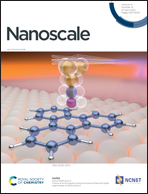Progress of tip-enhanced Raman scattering for the last two decades and its challenges in very recent years
Abstract
Tip-enhanced Raman scattering (TERS) has recently attracted remarkable attention as a novel nano-spectroscopy technique. TERS, which provides site-specific information, can be performed on any material surface regardless of morphology. Moreover, it can be applied in various environments, such as ambient air, ultrahigh vacuum (UHV), solutions, and electrochemical environments. This review reports on one hand progress of TERS for the last two decades, and on the other hand, its challenges in very recent years. Part of the progress of TERS starts with the prehistory and history of TERS, and then, the characteristics and advantages of TERS are described. Significant emphasis is put on the development of TERS instrumentation and equipment such as ultrahigh vacuum TERS, liquid TERS, electrochemical-TERS, and tip-preparations. Applications of TERS, particularly those with nanocarbons, biological materials, and surface and interface analysis, are mentioned in some detail. In the part on challenges, we focus on the very recent advances in TERS; progress in spatial resolution to the angstrom scale is the hottest topic. Recent TERS studies performed under UHV, for example chemical imaging at the angstrom scale and Raman detection of bond breaking and making of a chemisorbed up-standing single molecules at single-bond level, are reviewed. Of course, there is no clear border between the two parts. In the last part the perspective of TERS is discussed.

- This article is part of the themed collection: Recent Review Articles


 Please wait while we load your content...
Please wait while we load your content...